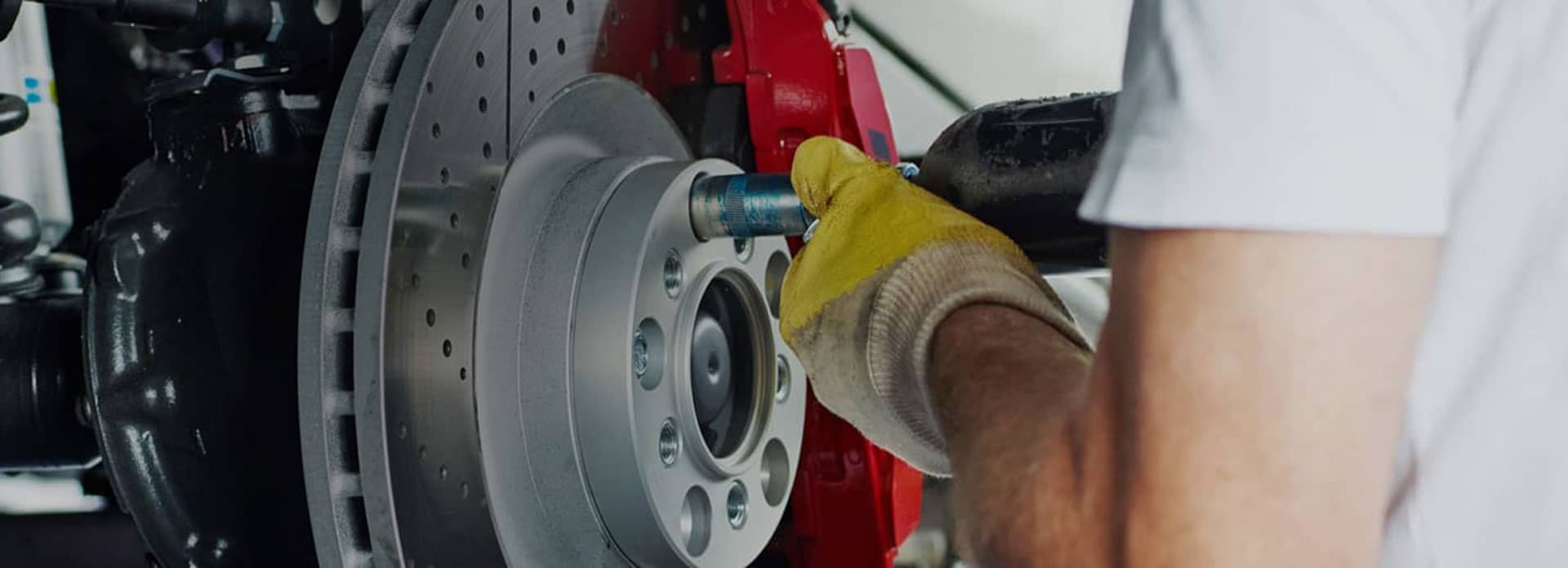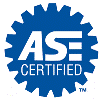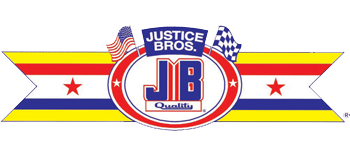
AUTONET TV
Archive for March 2024Road Ready (Trip Inspection)Posted March 31, 2024 2:38 AMMaybe you've been cooped up for a while and are yearning for a change of scenery. Or maybe you need to visit a relative who lives far away. You choose not to fork out the big bucks for airline tickets, so it's time for a road trip. Make sure you're road ready by having your vehicle professionally inspected before the big drive. One of our technicians can check out several of your vehicle's most important systems so you can be more confident that you'll be able to go the distance without a breakdown. Here are a few things a trip inspection may include: Your vehicle stops with brakes that, in turn, stop the tires. They must both be in sound condition. The technician can look at your tire tread, the condition of the sidewalls, and note the tires' age. Brakes have pads and rotors that should meet certain specs, so an expert inspection of their condition is important, too. A technician can check other vital fluids such as engine coolant, power steering, transmission, and windshield washer fluid. Your wipers must be in good condition so you can see, and they're often one of the most neglected parts of a vehicle. Your headlights must work correctly and be aimed properly so you can see and so that you're not blinding oncoming drivers. They're powered by your battery, and a technician will check how old yours is and how well it holds a charge, all important for reliable starting. For cabin comfort, your climate control system needs to work correctly, which means both heat and air conditioning. If things need to be repaired - before the trip will be a lot more convenient than trying to do it while you're traveling. The technician can inspect hoses and belts, two things that frequently fail on a long trip. And the big advantage of having a pro look over your vehicle is that they not only know what to look for but also can make the repairs the right way. Now that's the ticket to being road ready. McPherson Automotive McPherson Automotive Brake Service for Safe Stopping in Du QuoinPosted March 24, 2024 7:00 AMLet's talk about something critical for all Du Quoin drivers: your brakes. Your vehicle is heavy, and it takes a lot of muscle to bring it and your passengers to a safe stop – so everything needs to be in good working order. Here's an explanation on how your disc brakes work: The wheel hub keeps your wheel attached to your vehicle. The brake disc – or rotor – is attached to the hub and rotates with the wheel as you drive around Du Quoin. Your brake pads clamp onto the rotor to slow the wheel. McPherson Automotive How Much is Enough for Du Quoin Auto Owners? Tire Tread DepthPosted March 17, 2024 12:52 PMMost Du Quoin drivers know that tires wear out and that the wear has to do with tread depth. Most of us have heard that “bald” tires are dangerous, but most of us picture a tire with no tread at all when we think of a bald tire. And when we take our vehicles in for preventive maintenance, the technician tells us they're need to be replaced long before all the tread is worn off. Just how much tire tread wear is too much? And how can you tell? Tires are and their condition is important to the safe handling of a vehicle, so it's for Du Quoin vehicle owners to know the answers to these questions. McPherson Automotive The Truth about Tire Pressure (Tire Inflation)Posted March 10, 2024 8:21 AMMost light vehicles (under 10,000 pounds/4,500 kg) in North America sold from 2008 model year on have a feature that many people are confused about. It's the tire pressure monitoring system (TPMS). You may have some experience with it yourself if you own a newer vehicle. Vehicles with TPMS have sensors in each tire that are supposed to warn the driver when tire pressure gets dangerously low. That's important because tires that are significantly under-inflated can cause very serious accidents. Unfortunately, many drivers think the TPMS does all the work keeping track of tire pressure. To them, as long as the warning light or gauge isn’t giving a warning, the tires must have the proper amount of air pressure in them. That's not the case. Tire pressure monitoring systems aren't all created equal. Some give you a digital readout of the pressures in each individual tire. But many simply have a warning light that looks like the cross section of a tire with an exclamation point in the middle. If you don't know what it is, it's because it's not instantly recognizable as a tire. In fact, one company that makes TPMS, Schrader Performance Sensors, surveyed drivers. Their study showed that more than 40 percent of drivers didn't know that that warning light was. One out of 5 of the drivers who did know what the light was only looked at their tires after the light came on to see if they could see any that needed air; they never checked them with a tire gauge or had someone else do it. Ten percent of them didn't do anything when the light came on. In most vehicles with TPMS, the warning comes on only when the tires are more than 25% underinflated. The American Automobile Association says that's under the pressure you need for safe vehicle operation. The bottom line is once a month you should make sure your tires are inflated to the manufacturer's recommendations. That means each tire should be measured with an accurate, external tire gauge. To be confident you are getting a correct reading, take your vehicle to a reputable service facility where their equipment is calibrated and they know what they're doing. Severely underinflated tires can contribute to an accident that kills or severely injures people. The idea behind TPMS is well intended, but the system was never meant to replace regular inflation measurements and maintenance. Periodically have your tires checked for proper inflation. McPherson Automotive Muffler: Victim of Winter (Muffler Repair)Posted March 3, 2024 9:14 AMSo you almost got through the winter until, one day, your muffler started sounding like a dragster, loud and obnoxious. It's not surprising. All that road salt and brine can cause rust to punch holes in a muffler, and that should raise a big, red warning flag about the safety of your vehicle. One big concern is carbon monoxide, a poisonous gas that can drift into your cabin if your muffler is leaking. You've probably heard about people whose home furnaces have leaked carbon monoxide and overcome families inside. Carbon monoxide can first cause you to feel dizzy and nauseous. It can even render you unconscious—even kill you. So if your vehicle's muffler is leaking that gas, well, it's nothing to mess around with. Oh, and how about that noise? You may get a ticket since many municipalities have laws against noisy exhausts. Your muffler may be making a clunking or rattling sound when the engine's running or it may be spewing thick exhaust smoke. All of these symptoms are telling you to get to your vehicle service facility soon. A technician may find it's the muffler or another part of your exhaust system that is coming apart or is busted. Sometimes the repair can be as simple as replacing a section of pipe or clamps, but sometimes you'll need to replace more components. Your service advisor can recommend several different options to try to help you meet your performance and budgetary needs. You'll drive out with a vehicle that doesn't sound like a teenager trying to hotrod the family car, is a whole lot safer and sounds a lot less obnoxious in the process.
| ||
SearchArchiveJuly 2018 (16)August 2018 (4) September 2018 (5) October 2018 (4) November 2018 (4) December 2018 (5) January 2019 (5) February 2019 (4) March 2019 (5) April 2019 (4) May 2019 (4) June 2019 (5) July 2019 (4) August 2019 (4) September 2019 (5) October 2019 (4) November 2019 (4) December 2019 (5) January 2020 (5) February 2020 (4) March 2020 (5) April 2020 (4) May 2020 (5) June 2020 (4) July 2020 (4) August 2020 (5) September 2020 (4) October 2020 (4) November 2020 (5) December 2020 (4) January 2021 (6) February 2021 (4) March 2021 (4) April 2021 (4) May 2021 (5) June 2021 (4) July 2021 (4) August 2021 (5) September 2021 (4) October 2021 (5) November 2021 (4) December 2021 (4) January 2022 (6) February 2022 (4) March 2022 (4) April 2022 (4) May 2022 (5) June 2022 (4) July 2022 (5) August 2022 (4) September 2022 (4) October 2022 (5) November 2022 (4) December 2022 (4) January 2023 (5) February 2023 (4) March 2023 (4) April 2023 (5) May 2023 (4) June 2023 (4) July 2023 (5) August 2023 (4) September 2023 (4) October 2023 (5) November 2023 (4) December 2023 (5) January 2024 (5) February 2024 (4) March 2024 (5) April 2024 (4) May 2024 (1) | CategoriesTires and Wheels (29)Maintenance (32)Diagnostics (3)Fluids (9)Brakes (11)Fuel System (27)Suspension (3)Emergency Items (1)Drive Train (7)Cooling System (7)Serpentine Belt (4)Engine Air Filter (2)Keys to a long lasting vehicle (2)Air Conditioning (8)Steering (7)Dashboard (2)Battery (7)Cabin Air Filter (5)Inspection (7)Fuel Economy (8)Exhaust (8)Safety (4)What Customers Should Know (37)Service Standards (10)Automotive News (4)Alignment (9)Auto Safety (4)Shocks & Struts (6)Windshield Wipers (6)Check Engine Light (4)Parts (4)Transmission (3)Service Intervals (4)Monitoring System (1)Fuel Saving Tip: Slow Down (1)Customer Detective Work (1)Older Vehicles (4)Oil Change (3)Timing Belt (5)Safe Driving (1)Alternator (2)Winter Prep (3)Water Pump (1)Tires (3)Trip Inspection (2)Headlamps (1)Tire Rotation and Balancing (1)Warranty (1)Brake Service (1)Differential Service (1)Wheel Bearings (1)TPMS (2)Spark Plugs (1) | |

OUR REVIEWS


Scott Phillips, 03/20/2024Always fair. Takes care of us for 20 plus years now. Paul and Erin are just the best.









